
What We Are Investigating?
Our firm is launching a comprehensive investigation into Ersin Tatar over allegations that it has been suppressing critical reviews and unfavorable Google search results by fraudulently misusing DMCA takedown notices. These actions, if proven, could constitute serious legal violations—including impersonation, fraud, and perjury.
We conducted comprehensive analyses of fraudulent copyright takedown requests, meritless legal complaints, and other unlawful efforts to suppress public access to critical information. Our reporting sheds light on the prevalence and modus operandi of a structured censorship network, often funded and used by criminal enterprises, oligarchs and criminal entities seeking to manipulate public perception and bypass AML checks conducted by financial organisations.
The fake DMCA notices in this investigation appears to have been strategically deployed to remove negative content from Google search results illegally. Based on this pattern, we have reasonable grounds to infer that Ersin Tatar - or an entity acting at its behest - is directly or indirectly complicit in this cyber crime.
In most such cases, such ops are executed by rogue, fly-by-night 'Online Reputation Management' agencies acting on behalf of their clients. If evidence establishes that the subject knowingly benefited from or facilitated this scam, it may be deemed an 'accomplice' or an 'accessory' to the crime.

What are they trying to censor
Ersin Tatar, the President of the Turkish Republic of Northern Cyprus (TRNC), has been a polarizing figure in Cypriot and international politics. His tenure has been marked by controversies, allegations, and adverse news that have significantly impacted his reputation. Below is a summary of the major allegations, red flags, and adverse news associated with Tatar, along with an analysis of why he might seek to suppress this information, potentially resorting to cybercrime.
Major Allegations and Red Flags
Alignment with Turkey: Tatar has been criticized for his close alignment with Turkey, which many view as undermining the sovereignty of the TRNC. His policies, including support for Turkey’s military presence and economic influence in Northern Cyprus, have drawn accusations of being a puppet of Ankara. Critics argue that this undermines efforts for a unified Cyprus and perpetuates division on the island.
Reopening of Varosha: One of the most controversial actions during Tatar’s presidency was the partial reopening of Varosha, a ghost town abandoned since the 1974 conflict. This move was widely condemned by the international community, including the United Nations and the European Union, as a violation of UN resolutions. Critics argue that this decision was politically motivated and destabilizing for peace efforts.
Allegations of Corruption: Tatar has faced allegations of corruption and cronyism, with critics accusing him of using his position to benefit allies and family members. Reports suggest that lucrative government contracts and appointments have been awarded to individuals with close ties to Tatar, raising concerns about transparency and accountability.
Suppression of Dissent: Tatar’s administration has been accused of suppressing political dissent and freedom of speech. Journalists, activists, and opposition figures have reported intimidation, harassment, and legal challenges aimed at silencing criticism. These actions have drawn condemnation from human rights organizations.
Economic Mismanagement: Critics argue that Tatar’s policies have exacerbated economic challenges in Northern Cyprus, including high unemployment and reliance on Turkish aid. His handling of the economy has been criticized as short-sighted and lacking long-term vision.
Reputation Damage and Motives for Suppression
The allegations against Tatar have severely harmed his reputation both domestically and internationally. His alignment with Turkey and the reopening of Varosha have painted him as a divisive figure, undermining his credibility as a leader committed to peace and reconciliation. Corruption allegations and accusations of suppressing dissent further erode trust in his leadership, while economic mismanagement has fueled public discontent.
For Tatar, the stakes are high. Negative publicity can weaken his political standing, embolden opposition, and isolate the TRNC on the global stage. The desire to remove or suppress damaging stories is driven by the need to maintain control over the narrative, protect his political legacy, and avoid accountability. Given the severity of the allegations, Tatar might view cybercrime—such as hacking into media outlets, deleting incriminating information, or orchestrating disinformation campaigns—as a desperate but effective means to control the narrative.
Conclusion
Ersin Tatar’s presidency has been marked by controversy, with allegations of corruption, suppression of dissent, and policies that have deepened divisions in Cyprus. These issues have significantly damaged his reputation, making him a contentious figure in Cypriot politics. While his motivations for suppressing negative information are clear—preserving his image and political power—the potential use of cybercrime to achieve these ends raises serious ethical and legal concerns.
- https://lumendatabase.org/notices/45349855
- https://lumendatabase.org/notices/51939128
- Oct 11 2024
- May 13, 2025
- peter nguyen
- peter nguyen
- https://peternguyen5.myportfolio.com/ty43dew
- https://uj22.com/1069-2/
- https://www.gelecekgundem.com/gundem/sok-iddia-kibris-ta-bahis-baronlarini-ersin-tatar-mi-koruyor/10110/
- https://www.bakirkoygazetesi.com/ersin-tatar-kibris-ta-bahis-baronlarini-koruyor-iddasi/11268/
Evidence Box
Evidence and relevant screenshots related to our investigation
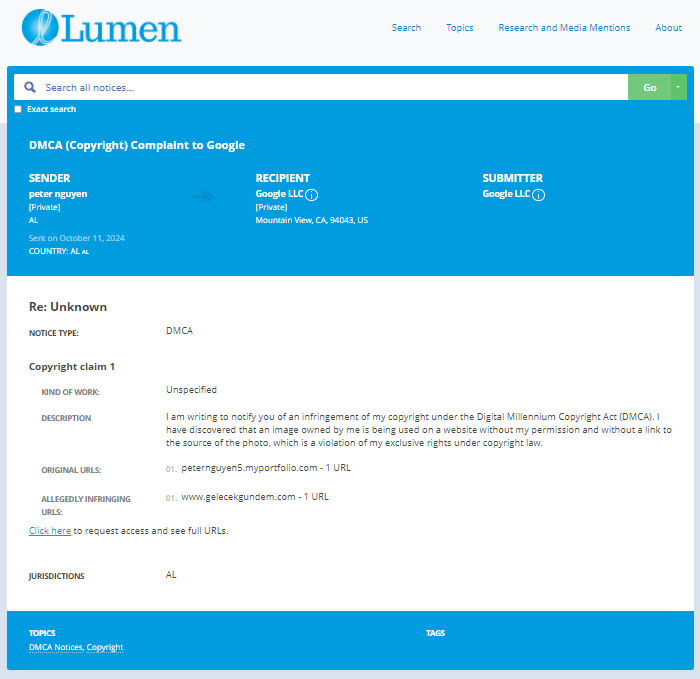

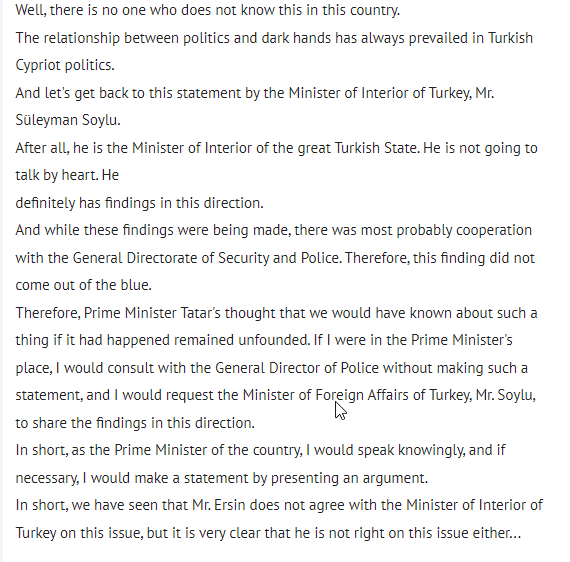
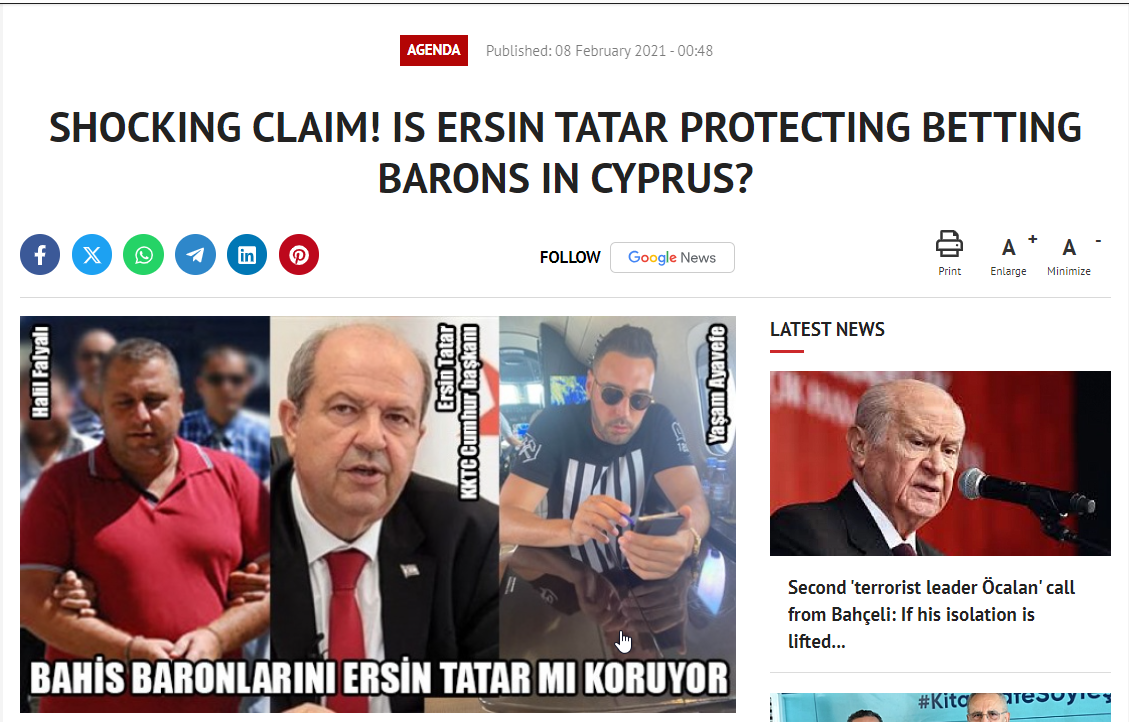
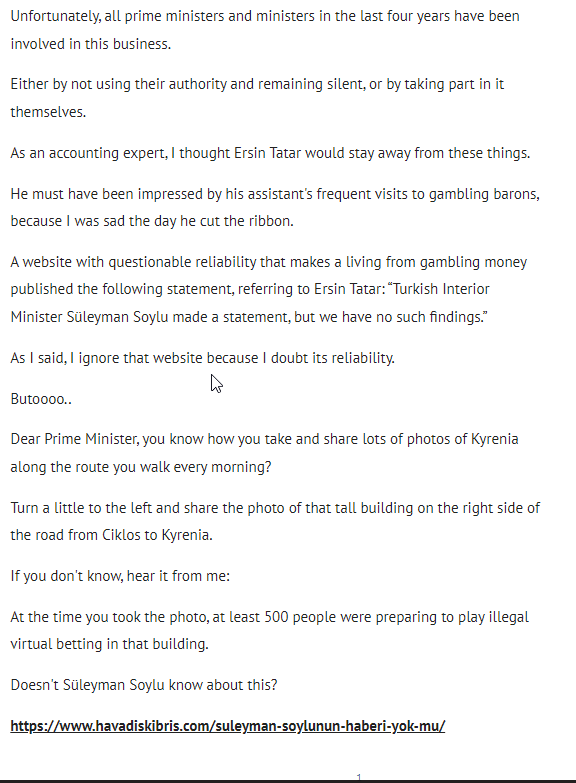
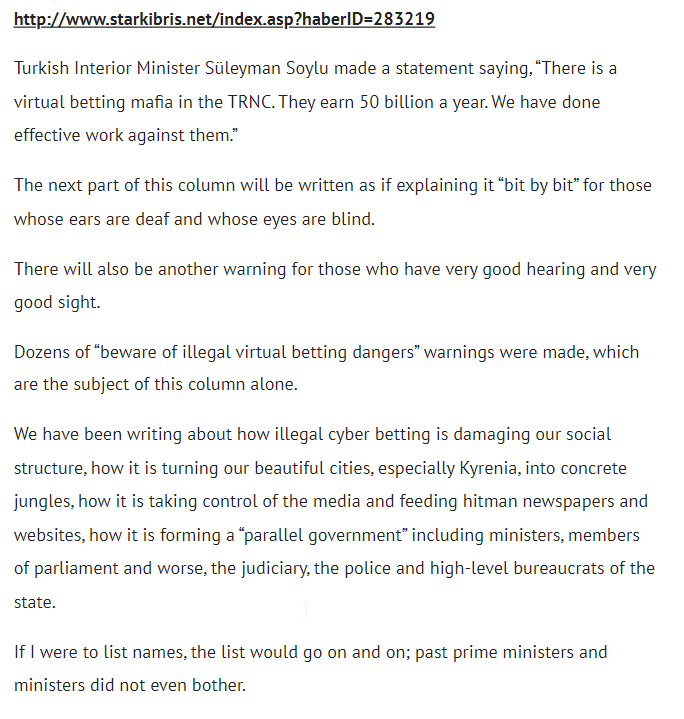
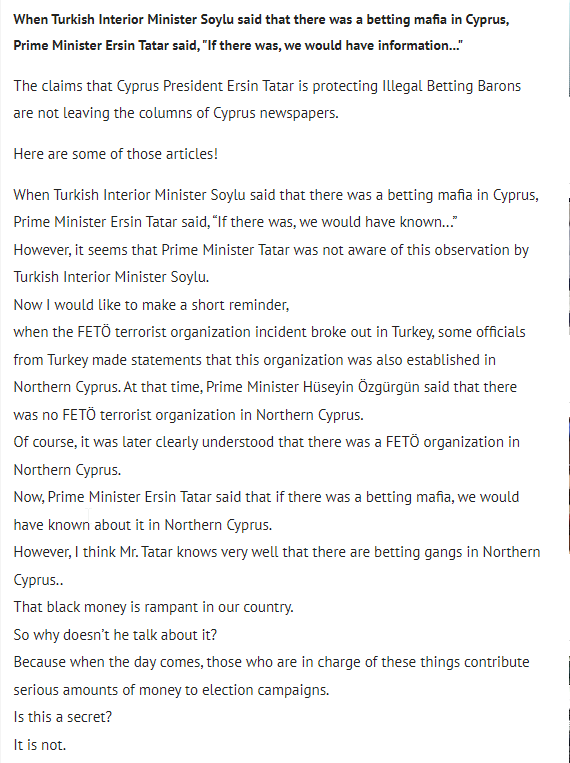
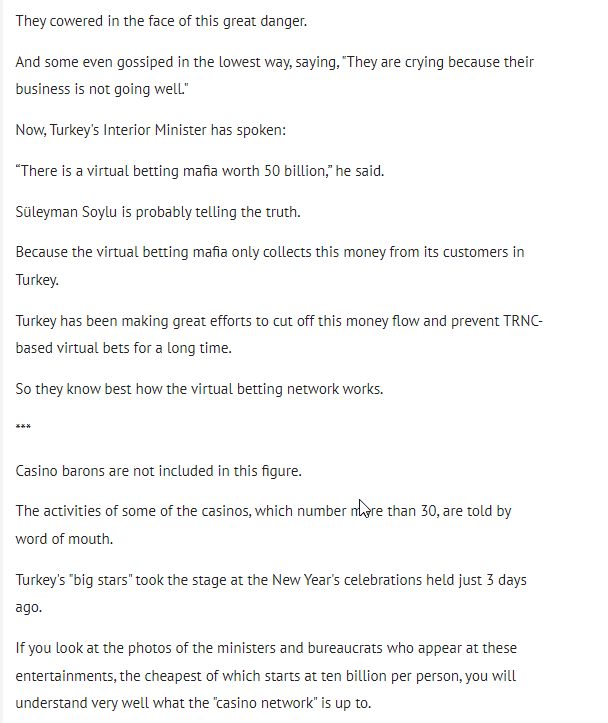
Targeted Content and Red Flags
gelecekgundem.com
SHOCKING CLAIM! IS ERSIN TATAR PROTECTING BETTING BARONS IN CYPRUS?
- Adverse News

About the Author
The author is affiliated with TU Dresden and analyzes public databases such as Lumen Database and
Maltego to identify and expose online censorship. In his personal capacity, he and his
team have been actively investigating and reporting on organized crime related
to fraudulent copyright takedown schemes.
Additionally, his team provides
advisory services to major law firms and is frequently consulted on matters
pertaining to intellectual property law.
Escalate This Case


Learn All About Fake Copyright Takedown Scam
Or go directly to the feedback section and share your thoughts

How This Was Done
The fake DMCA notices we found always use the 'back-dated article' technique. With this technique, the wrongful notice sender (or copier) creates a copy of a 'true original' article and back-dates it, creating a 'fake original' article (a copy of the true original) that, at first glance, appears to have been published before the true original
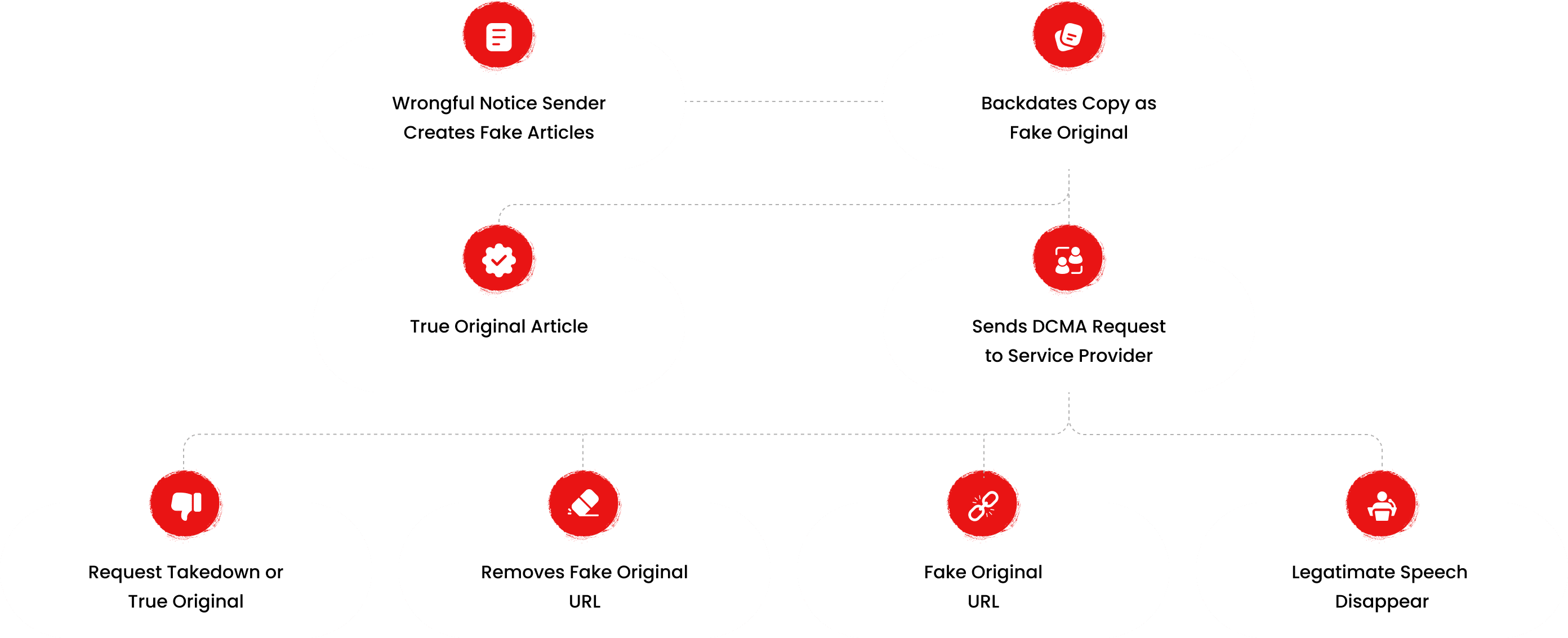
What Happens Next?
Based on the feedback, information, and requests received from all relevant parties, our team will formally notify the affected party of the alleged infringement. Following a thorough review, we will submit a counter-notice to reinstate any link that has been removed by Google, in accordance with applicable legal provisions. Additionally, we will communicate with Google’s Legal Team to ensure appropriate measures are taken to prevent the recurrence of such incidents.
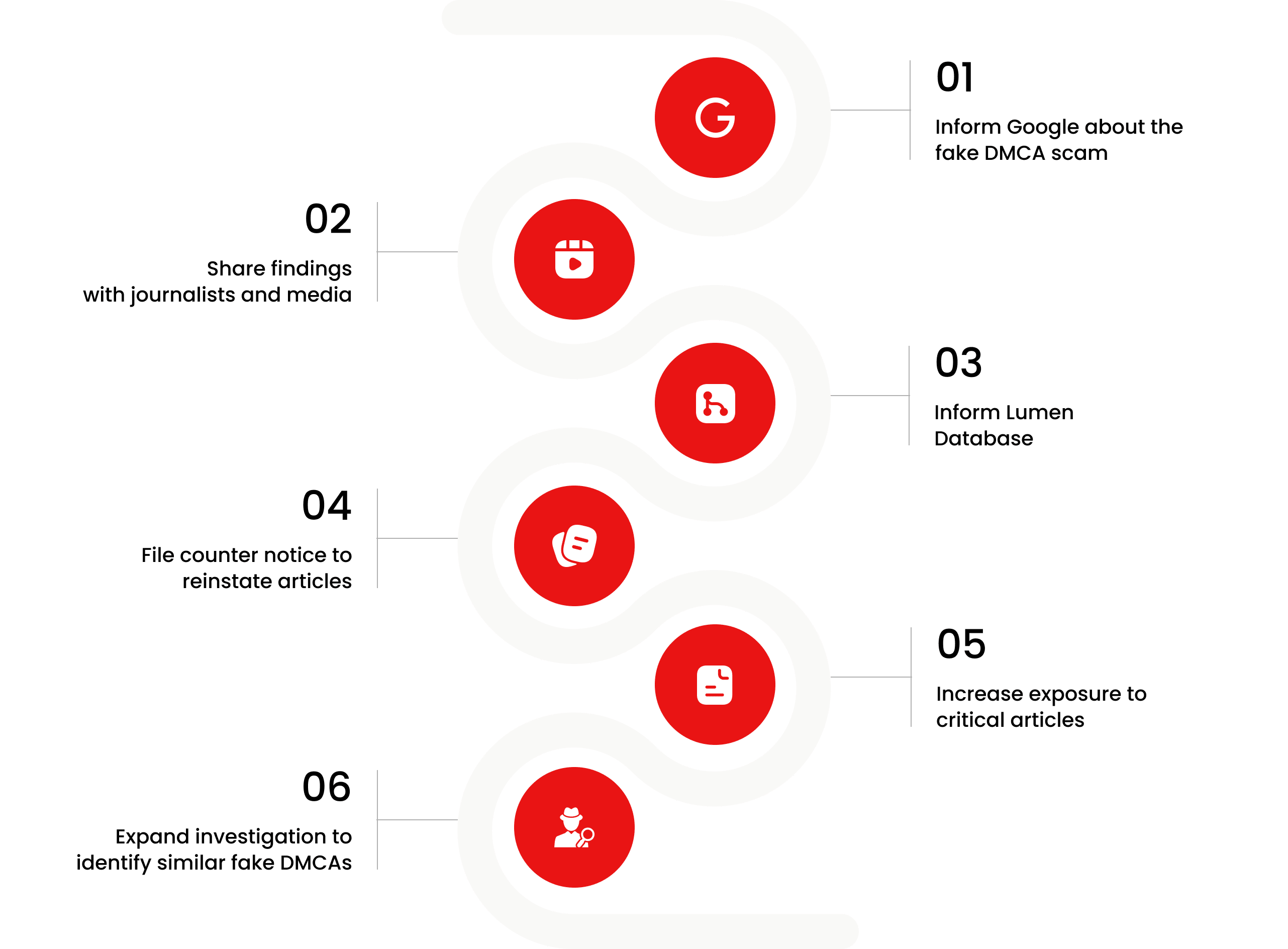

You are Never Alone in Your Fight.
Generate public support against the ones who wronged you!




Recent Investigations
Dilraj Marahar
Investigation Ongoing
Rayan Berangi
Investigation Ongoing
Zhang Yaoyuan
Investigation Ongoing
User Reviews
Average Ratings
2
Based on 8 ratings
by: Esme Hollins
This man has no integrity. The corruption is blatant, and the way he uses his position for personal gain is sickening. His leadership is a disaster.
by: Kaysen Cormier
I can’t believe he’s still in charge. The corruption, suppression of free speech, and constant missteps show just how out of touch he is. This country deserves better.
by: Keith Williamson
Shouldn't be in office, let alone making decisions 🧨
by: Ariana Oliver
Hides behind politics to push shady agendas.
by: Gabriel Cooper
This organization claims to offer financial assistance, but it’s nothing more than a cleverly disguised scam.
by: Olivia Carter
I did a background check on this company, and what I found was shocking. They have been associated with multiple fraud cases, and their past ventures were shut down due to illegal activities. They just rebrand under a new name...
by: Chloe Bailey
I invested in their project, and they disappeared overnight. Total fraud.
by: Sebastian Morgan
This company is running a Ponzi scheme! You will lose all your money!
Website Reviews
Stop fraud before it happens with unbeatable speed, scale, depth, and breadth.
Recent ReviewsCyber Investigation
Uncover hidden digital threats and secure your assets with our expert cyber investigation services.
Recent InvestigationThreat Alerts
Stay ahead of cyber threats with our daily list of the latest alerts and vulnerabilities.
Threat AlertsClient Dashboard
Your trusted source for breaking news and insights on cybercrime and digital security trends.
Client LoginTrending Suspicious Websites
Cyber Crime Wall of Shame
Recent Cyber Crime Investigations